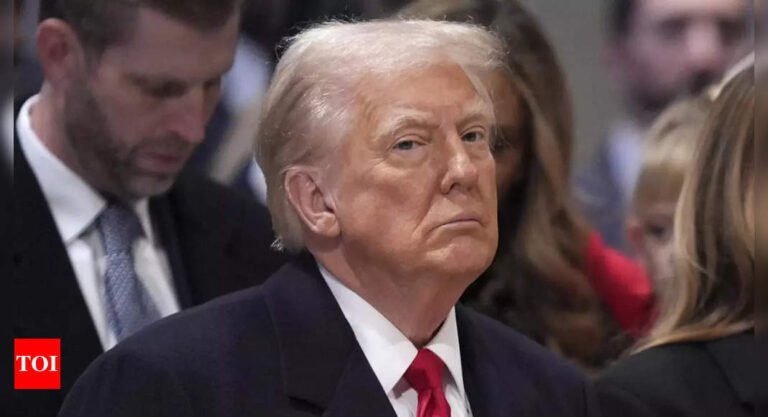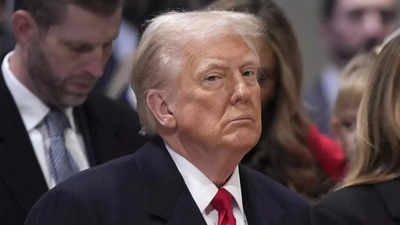US President Donald Trump has vowed to impose what he calls reciprocal tariffs on countries, such as China, Brazil, France, the European Union, India and others, to “restore the fairness in US trade relationships and countering non-reciprocal trading arrangements”. The “Fair and Reciprocal Plan” ostensibly seeks to “correct long-standing imbalances” in global trade and ensure fairness across the board and make US industry competitive.
What are reciprocal tariffs?
There is nothing like reciprocal tariffs in global trade rules. It’s a term coined by US president Donald Trump during his election campaign seeking to hit out at trade partners, such as India, which he asserts have high tariffs on products such as automobiles and alcohol. The idea is to match duties. In simple terms, if Country A sees that Country B places a 20% tariff on goods imported from A, then Country A might decide to match that same 20% tariff on goods it imports from B.
Are Indian tariffs actually high?
A White House Fact Sheet says the average applied US tariff is 5%, compared to 39% in India. It also says that India charges 100% duty on motorcycles compared with 2.4% in the US. The numbers do not factor in the lower tariffs announced for motorcycles in the budget – 40% in completely built form. Besides, Trump is also being selective with facts. Some footwear items attract close to 40% import duty in the US, certain varieties of peanuts are taxed at over 54%, while a few textiles products, such as some of men’s and boy’s trousers, breeches and shorts face tariffs of 28%. And, the import duty on certain types of tobacco is 350%. While the US cries foul over high duties on alcohol in India, which faces upwards of 100% duty, this is because govt treats it as a sin good, just like tobacco.
As for complexity, which India is often criticised for, here is a sample from the US tariff schedule: Certain wrist watches have a specific duty, up to $2.3 each, in addition to 6.25% tariff on the case and strap and 5.3% on the battery. In any case, govt officials and trade experts pointed out that India’s duties are in line with commitments undertaken by it at the WTO, which provides developing countries the flexibility to levy higher duties to allow nascent industries to develop. In contrast the caps on tariffs for developed countries are much lower.
How will reciprocal tariffs work?
Trump’s statement early Friday only suggests a tit-for-tat action, although it is open to interpretation. The US commerce department will produce the list by April 1. It could mean that the U S authorities prepare item-wise import duty based on what each country levies on American products. The White House Fact Sheet talks about Brazil levying 18% duty on ethanol compared with 2.5% by the US. Or EU imposing 10% duty on imported cars against 2.5% in the US. Some experts also suggested that it could mean product category-wise duties. But all of this is speculation since no details have been spelt out.
Trump’s statements have in fact added more complexities. He wants to budget for subsidies, other trade barriers and VAT. Now, WTO agreement deals with subsidies separately and is subject to safeguard action. As for VAT, global trade rules allow countries to impose the same level of VAT or GST on a product, that is applicable to a domestically produced item. And, it is over and above customs duty.
So, what next?
Most trade experts see Trump’s threats as a negotiating tool to get countries on the table. Countries are waiting for more clarity to emerge and some are expecting a trade war with American trade partners responding through other action and challenging the decisions at WTO’s dispute settlement body. But successive US presidents, starting with Barack Obama, have made the WTO’s dispute mechanism defunct and there is not much hope there.
What’s the implication for the US?
Higher tariffs on imports means that prices in the US will go up, something that Trump admits is a possibility in the short-term. But for the medium-term, he is selling the great American resurgence story, ignoring that wages in the US are so high that it is tough for it to compete with countries where they are lower.
Trending
- India begins homework for proposed trade deal with US
- US tariff: ‘No major impact on pharma’
- PhonePe prepares for public listing
- Elon Musk-led Tesla’s India entry: Modi government’s new EV policy may help cos like Tesla test waters
- Stock market today: BSE Sensex tanks over 500 points; Nifty50 below 22,800
- Suzuki rejigs India EV plans
- Samsung seeks Tamil Nadu government help for workers’ safety
- Top stocks to buy today: Stock recommendations for February 21, 2025
- RBI rejects all bids at auction to ease liquidity
- 12,000 crore duty demand from Skoda VW not arbitrary: Customs department tells court



